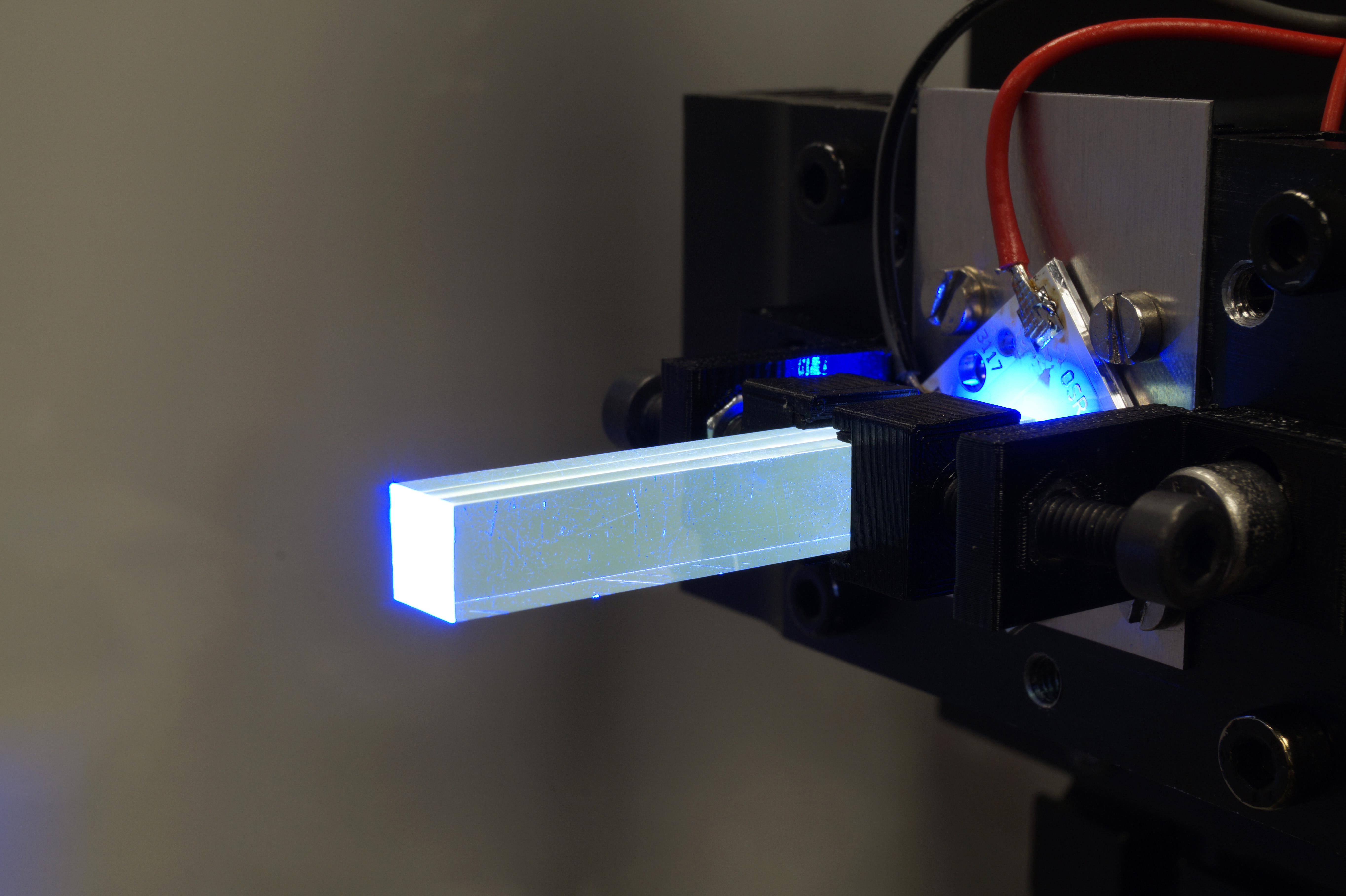
Phosphor-converted ultraviolet or blue laser diodes are an intriguing source of green light due to their high luminance.
Digital projectors, such as those used in cinemas or meeting rooms, need to be very bright so that even large-format images can still be clearly seen. The high-intensity discharge lamps previously used for these purposes are increasingly being replaced by laser diode-based light sources. The brightness of the projector depends heavily on the power of the laser diodes used. The efficiency of green-yellow laser diodes is far lower than that of blue or red emitting diodes. This is referred to as the “green gap”, and it remains a challenge for the production of modern light sources such as LEDs and laser diodes. Glass phosphors containing metal ions from the rare earth group combined with a source of ultraviolet (UV) or blue light provide an alternative for achieving a bright light impression in the green-yellow spectral range. Borate glass offers very good chemical and thermal stability, high transparency, and good solubility for rare-earth ions. The latter is particularly important for the optical activation of glass with dysprosium (Dy3+) or terbium (Tb3+). Both ions produce intense yellow-green to green luminescence when excited in the ultraviolet to blue spectral range. However, they differ in terms of the percentage of the absorbed ultraviolet blue light that is converted into yellow-green luminescent light. Despite the high conversion values in borate glass of about 40 percent for Dy3+ and 80 percent for Tb3+, the light yield is low. This is mainly due to the weak absorption capacity of rare earth ions. Light rods can offer a solution. They extend the absorption path and at the same time accumulate the generated light so that the light yield is significantly higher. The length of the light rod determines the luminous flux and thus the luminance at the exit face. Generally speaking, the longer the light rod, the greater the amount of excitation light absorbed. Above a certain length, however, the light yield at the end of the rod decreases due to self-absorption, meaning that the optimum length must be determined in each case. To date, the best simulation results have been achieved with a Tb3+-doped light rod measuring about 40 mm in length: When excited in the UV spectral range (378 nm) with an optical input power of 1 watt, a luminous flux of more than 300 lumens is achieved. Comparable green LEDs offer a luminous flux of 100 lumens with an electrical output of 1 watt.